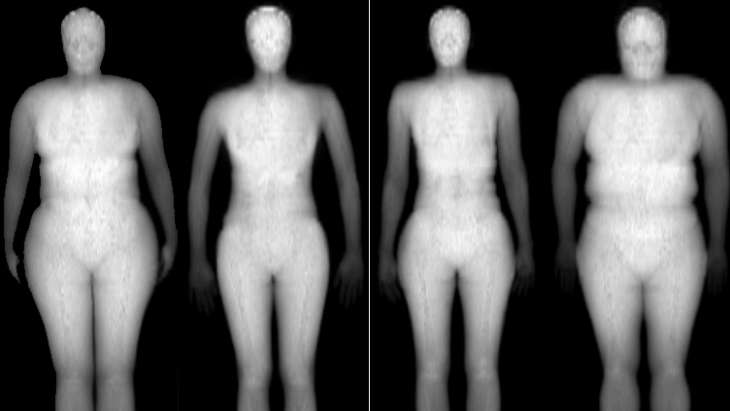'Evolutionary fitness' key in determining why some females more physically attractive than others

Scientists from the University of Aberdeen have been working as part of an international collaboration co-ordinated by the Institute of Genetics and Developmental Biology at the Chinese Academy of Sciences in Beijing to try and discover why there is a link between body fatness and perceived physical attractiveness.
The study, which was funded by the National Science Foundation of China and involved researchers from 10 different institutions around the world, was published today (August 25) in the journal PeerJ.
One idea about how we rate physical attractiveness is based on the impact that different aspects of our bodies (like body fatness) have on evolutionary fitness. For example, we know that above a certain body fatness females have greater risks of chronic diseases like diabetes and heart disease, and lower fertility, which might make fatter subjects less attractive. On the other hand, in the past fatter people might have had greater abilities to survive famines, making fatness more attractive. This might suggest there is an optimum level of fatness that is maximally attractive which is somewhere in between.
The study was coordinated by Professor John Speakman, of the Institute of Genetics and Developmental Biology, Chinese Academy of Sciences, Beijing and the Institute of Biological and Environmental Sciences at the University of Aberdeen in Scotland.
Professor Speakman explains: "Fitness in evolutionary terms comprises two things: survival and the ability to reproduce. What we wanted to investigate was the idea that when we look at someone and think they are physically attractive, are we actually making that assessment based on a hard-wired evolutionary understanding of their potential for future survival and reproductive ability?"
To test their idea, the scientists built a mathematical model which combined the relationships between levels of obesity and the future risk of mortality from all causes, and the relationship between obesity and the future possibility of having children. This model predicted that people would perceive females with a body mass index (BMI) of between 24 and 24.8 as being the most physically attractive.
Researchers then tested the prediction on more than 1,300 people, both males and females, from the UK and nine other countries. Participants were shown 21 image cards showing females with different levels of body fatness and were asked to reorder them from least to most attractive.
In all the populations, males and females rated physical attractiveness of the female images very similarly. The very thinnest images with body mass index of around 19 were rated as most attractive. As fatness increased above that value, the less attractive they were rated. This contrasted the predictions of the mathematical 'fitness' model that there should be a peak in attractiveness around a BMI of 24 to 24.8.
The reason for the discrepancy was revealed when subjects were asked how old they thought the people in the images were. In this exercise they judged that the fatter people were older. Age is itself a strong indicator of evolutionary fitness. When the age factor was included into the model the optimum fatness fell to a BMI somewhere between 17 and 20 – corresponding exactly to the images people found to be most attractive.
This suggests that we find thinness in females so attractive because we equate it with youth - a BMI of 17-20 corresponds to the average BMI of a young 18-20 year old with maximal fertility and minimal risk of future disease.
This was to be consistent across European, African and Asian test groups. Historical exposure to famine does not appear to have been an important factor driving the link between fatness and attractiveness.
Dr Lobke Vaanholt, who organised the University of Aberdeen component of the study, said: "Although most people will not be surprised that extreme thinness was perceived as the most attractive body type, since this prevails so heavily in media, culture and fashion, the important advance is that now we have an evolutionary understanding of why this is the case."
Professor John Speakman added: "I am delighted to have been involved in this international collaboration that has revealed evolutionary aspects of what people regard as attractive across diverse cultures. Setting this into an evolutionary framework allows us to understand why we perceive thinness in females to be so attractive. Importantly it also suggests that historical exposure to famine has not been an important factor."
More information: "The relationship of female physical attractiveness to body fatness." PeerJ 3:e1155 dx.doi.org/10.7717/peerj.1155
Journal information: PeerJ
Provided by University of Aberdeen


















